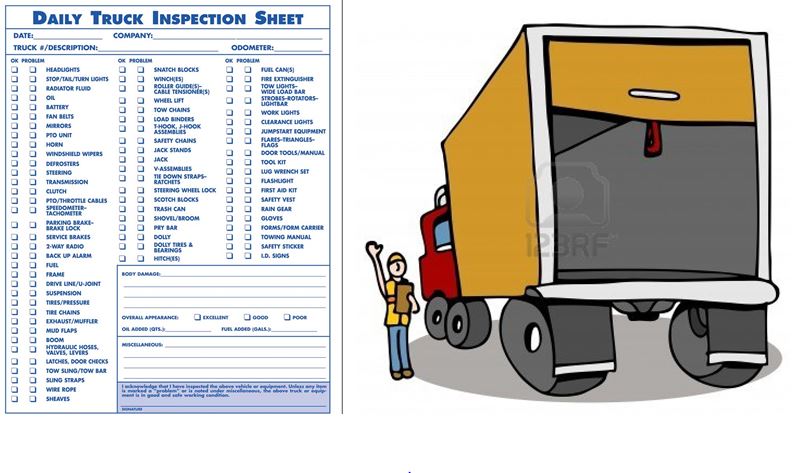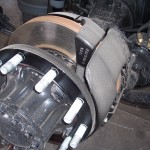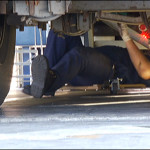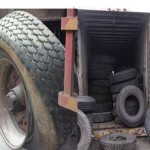
Prevention is better than cure….so says a popular idiom! This idiom couldn’t be truer in the context of the haulage services industry. Cure or Corrective Maintenance, as in the case of waiting for the disaster to hit and then seeking for palliative measures can be very costly, destabilizing, frustrating, time consuming and energy-sapping. Prevention obviously seems to be a better and more preferred option.
In Fleet Management, as with any business engaged in the deployment of mechanical equipment, Preventive Maintenance implies a systematic inspection, detection, correction, and prevention of incipient failures in fleet’s most critical assets (trucks), before they become actual or major failures.
In this write-up, Haulage Report Now serves you a systematic sequence for inspecting and ensuring your valuable asset remains in the best possible shape all of the time barring any unforeseen occurrence.
We would advise that a checklist be extrapolated from this scheme which can then be ticked out as inspection is being carried out.
UNDER THE HOOD
Locate operator’s manual for vehicle.
Fuel, oil, and exhaust leaks – Inspect.
Oil and fuel lines – Examine for chafing and kinks.
Automatic transmission – Inspect oil level; also, standard transmission.
Radiator core, water pump, cylinder head, block, heater, hoses and connections – Inspect for leaks.
Power steering pump reservoir – Check fluid level, inspect for leaks and add if required.
Inspect all belts – condition and adjustment.
Electrical connections and mounting bolts of starter, generator, alternator – Tighten.
Generator commutator and brushes – Inspect.
Alternator, generator and regulator – Test and adjust with voltmeter.
Steering gear housing – Inspect lubricant level.
Steering gear housing bolts – Tighten.
Clutch and/or brake master cylinder – Inspect fluid level and add if necessary
Battery – Remove cables, clean terminals, reinstall cables, coat with petroleum jelly.
Battery – Test cells specific gravity with hydrometer. Check Cells 1-6
Battery – Examine level of each cell, add distilled water if required.
Radiator – Inspect coolant level and add water or antifreeze solution if required.
Radiator coolant – Inspect for signs of oil or combustion leakage.
Cooling system – Pressure test.
Engine oil – Inspect level. Change if at change period or add.
Air cleaner – Clean.
Air compressor – Adjust, cut in —–psi (reading); cut out ——psi (reading); tighten mounting
GAS ONLY
Crankcase breather and oil filler cap air cleaner – Clean and/or replace.
Fuel filter – Clean or replace (replace paper clement always).
Carburetor air cleaner – Clean or replace.
Spark plugs – Remove, inspect, clean or replace and gap. Torque with new gaskets.
Distributor – Inspect contacts for corrosion and cap for cracks. Inspect wiring condition and points, inspect rotor for burning/cracks.
Cylinder compression – Test and record:Manifolds – Inspect for leaks, tighten nuts, with engine at normal operating temperature.
- Dry 1 ___ 2 ___ 3 ___ 4 ___ 5 ___ 6 ___ 7 ___ 8
- Wet 1 ___ 2 ___ 3 ___ 4 ___ 5 ___ 6 ___ 7 ___ 8
Cylinder head bolts – Torque.
Positive crankcase ventilator valve – Remove, clean or replace.
Valves – Run engine at proper idle, inspect overhead system and, adjust valve lash if required.
Valve cover gasket – Replace.
Carburetor – Adjust idle mixture and RPM.
Ignition timing – Set with light. Use tachometer and record top engine RPM.
Radiator shutters – Inspect to see they are open before starting engine and close as air pressure builds up after starting engine.
Shutter-stat – Lubricate.
With engine operating at proper temperature – Tighten exhaust manifold and exhaust pipe flange nuts. Tighten air inlet system hose clamps. Inspect for leaks.
Air box drains and crankcase breather tubes – With engine running, see that they are open.
Primary and/or secondary fuel filters – Open petcock and drain water.
Fuel return line – Disconnect at tank or other convenient place. Run engine at —– RPM. Fuel return should be approx. —-quarts per minute. Observe fuel for appearance of air bubbles or gases.
Primary fuel filter – Clean.
Secondary fuel filter – Replace if at change period.
Engine and oil cooler lines – Inspect for leaks.
High pressure lines and clamps – Inspect, tighten or replace.
Fuel jumper lines – Tighten if required.
Valves – Inspect for proper clearance. (LASH.)
Injector nozzles – Inspect and clean as required, set cracking pressure
Injectors – Check and adjust for proper height setting. Inspect overhead system and adjust rack.
Air cleaners – Clean and refill reservoir with engine oil.
Emergency stop control – Test with engine off.
Throttle, accelerator, shut-off and choke controls – Test operations.
High idle speed setting – Test and record ——RPM. Low idle speed setting and record ——RPM.
Check on a dynamometer – PTO RPM’s—– High Idle ——- Rated —-Horsepower







Prevention is definitely better than cure. Checking your machinery/heavy-equipment/vehicles before using them and after using them is really important. In my experiences in dealing with trucks, repairs are more costly than maintenance. I rarely get to buy new parts for my truck if I have them maintained properly and there is little to no downtime, so I can really maximize the use of my truck.
Preventive maintenance is as important as driver safety programs. If a vehicle becomes unsafe due to lack of maintenance or repair, the fleet manager can be held liable for negligent entrustment.